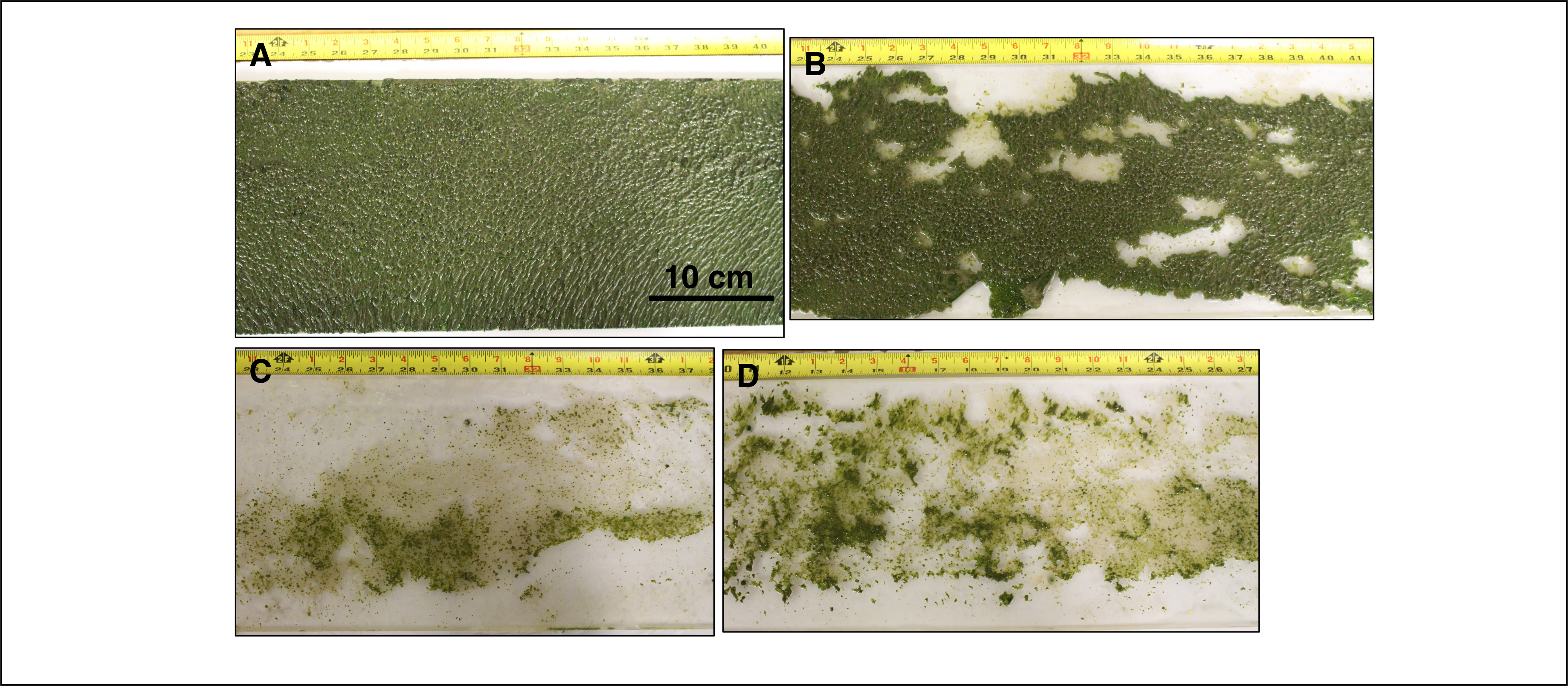 Representative subsection of (A) uniform biofilm; (B) patchy biofilm; © sparse biofilm 1; (D) sparse biofilm 2.
Representative subsection of (A) uniform biofilm; (B) patchy biofilm; © sparse biofilm 1; (D) sparse biofilm 2.
Abstract
Algal biofilms, ubiquitous in aquatic systems, reduce the performance of engineered systems and alter ecosystem processes. Biofilm morphology is dynamic throughout community development, with patchiness occurring due to periodic sloughing, but little is known about how community level physical structure affects hydrodynamics. This study uses high resolution particle image velocimetry (PIV) to examine spatially explicit turbulence over sparse, uniform and patchy biofilm at turbulent Reynolds numbers. All biofilms increase the near-bed turbulence production, Reynolds shear stress, and rotational flow compared to a smooth wall, and non-uniform biofilms have the greatest increase in these parameters, compared with a uniform or sparse biofilm. However, a higher drag coefficient over uniform biofilm compared with non-uniform biofilm indicates that percent coverage (the amount of area covered by the biofilm) is a useful predictor of a biofilm’s relative effect on the total drag along surfaces, and in particular the effect on ship performance.